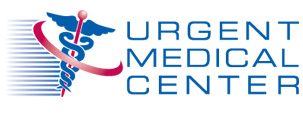
When stitches are necessary they should be applied within 6 to 8 hours after the injury occurs. Some wounds can be closed within 24-hours after the injury. Stitches close a wound so that your risk of infection decreases. The longer your wound is open, the greater the risk of infection. But that doesn’t mean all wounds require stitches. In fact, for some cuts it’s actually counterproductive to use stitches.
Most minor cuts heal on their own without any professional medical attention. More severe cuts may not properly heal without stitches, causing additional issues such as infection. Your wound may look like it needs to be stitched closed, but only a doctor should determine the best course of action. If you are at all concerned about the appearance of a wound it’s important to seek medical treatment to prevent infection and other issues.
Here are some signs you need to go to urgent care for your injury:
-It continues bleeding after applying pressure for 5 minutes.
-It spurts blood—this may indicate a damaged artery.
-The cut is wide open or gaping.
-The cut is located on your face, neck or genitals.
-There is glass or any other debris trapped inside or sticking out of the cut.
Are you still unsure if your cut warrants a trip to Urgent Care or the ER? Here are some more helpful tips and tricks to determine the severity of your wound.
The Pinch Test
Try pinching both sides of the wound together in order to identify if you need stitches or not. If pinching the wound together makes the injury look better and the edges come together, you may want to consider visiting your local Urgent Medical Center for stitches. Do not apply any antiseptic or antibiotic ointment until a doctor has a chance to look at your injury.
Location Of The Wound
The location of your wound will also impact severity and likelihood of needing stitches. For instance, if the wound is on your face or lips it may require stitches in order to reduce the risk of scarring.
Wounds that are near joints or open up when certain joints are moved often require stitches. This is especially true if you can see any fat, muscle, joint structures or bones when you pull the cut open.
Deep gashes on your hands or fingers often require stitches.
Size Of The Wound
Wound size says a lot about treatment options. The following wound sizes are key indicators if you need stitches:
-Wounds that are larger than 0.25-inches deep and/or have jagged edges and gape open.
-Wounds that measure longer than 0.75-inches.
-Wounds deep enough to extend down to the muscle, bone, fat or other deep structures.
Dirty Wounds
If your cut was obtained in a dirty environment—say for instance you cut yourself on a rusty nail, were dragged through debris or suffered an animal bite—your risk for infection increases tremendously. In some cases, cuts with a greater risk of infection are not closed until 24-hours after they occur in order to reduce the risk of closing bacteria up inside. While the cut remains open, the wound can be regularly cleaned and antibiotic treatment applied.
Even if the wound does not end up needing stitches, it’s best to visit a doctor in order to have the wound assessed and cleaned.
Foreign Objects In Your Wound
If there is a foreign object trapped inside of your wound do NOT remove it. Metal, sticks, rocks or anything else should be examined and properly removed by a medical professional. The object may be stuck in an artery and blocking severe, even life threatening, bleeding.
Signs your wound does NOT require medical attention:
-The wound has smooth edges that stay together when you move around.
-Your wound is less than .25-inches deep, and less than 0.75-inches long.
-It is a puncture wound. Most infected puncture wounds drain and heal faster without stitches.
-Stitches will not help minor cuts heal faster or prevent scarring. In fact, narrow and shallow wounds can be made worse by stitches because they lock in bacteria and increase your risk of infection.
Treating Minor Cuts At Home
Minor cuts are best treated at home. Clean the wound a few times a day, reapply antibiotic ointment and re-bandage the wound.
While hydrogen peroxide is often used to sanitize wounds, it actually damages tissues and deters healing. Instead, use water and a diluted liquid antibacterial soap to clean your wound.
Keep a close eye on your wound, if it is not healing or it appears to be getting worse, visit Urgent Medical Center as soon as possible.




